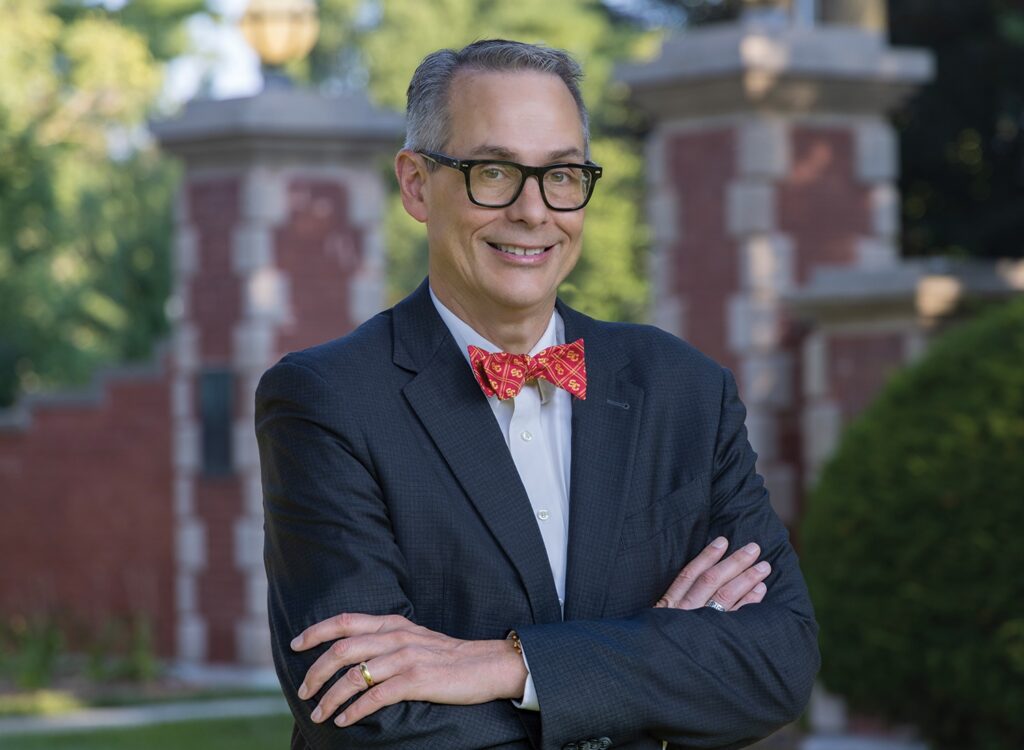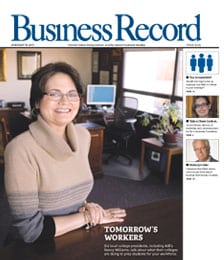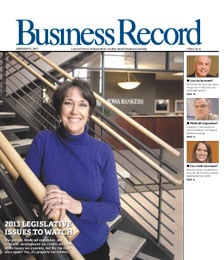Coach: Money in the bank doesn’t equal retirement readiness

Retirement coach Margaret Altmix spoke with one client recently who said she expected retirement to be like heaven. That was until the day she retired.
“She thought she wouldn’t have to do anything in retirement, but when she got there, she realized that she had to create a new life,” Altmix said. “She wasn’t ready for the implications of that.”
Altmix, the chief operating officer of Employee & Family Resources, helps people create realistic expectations for retirement and design plans to help the transition go as smoothly as possible.
Responding to a growing concern about retirement among her aging clients from the Baby Boomer generation, Altmix earned her certification as a retirement coach a year ago and began offering her services through EFR. Instead of focusing on finances, her work concentrates on topics she feels have been ignored in retirement planning, such as the psycho-emotional and social changes people encounter when they leave their jobs.
“I’ve been in the workforce for 35 years, and until last year, I never heard anything about retirement planning other than the financial aspect of it,” Altmix said. “It’s just something that nobody has talked about.”
Many people are scared about retirement, Altmix said. “It’s a major change for them to hand over the keys to their office that they’ve had for 30 years.”
Clients come to Altmix on an individual basis or through their employer. Many are near retirement age and others are several years away from it. But even if retirement is 10 years off, it’s not too early to start working on the topic with a coach, Altmix said.
“If they don’t know exactly when retirement is going to come, I say, ‘Let’s not think about the date. Let’s just think about what needs to be done,’” she said. “If we find that they need to work on a particular area of their life, then they have eight to 10 years to start chipping away at it. Their plan just wouldn’t be as aggressive as someone who is going to retire in six months.”
Altmix has created a retirement readiness assessment for her clients, which she uses to identity possible gaps in planning that could negatively affect their retirement experience. She looks for lifestyle patterns that have been known to create challenges for new retirees. Here a few examples of types of people who she says tend to have the most difficulty adjusting to retirement:
People whose social network is primarily at work.
People who have few or no interests outside work.
People who are very passionate about their work or are strongly identified with what they do for a living. Several companies have paid for retirement coaching for their employees, Altmix said, either through a group or one-on-one setting. But unlike other employee-assistance services that EFR offers, employers have yet to add this program to employee benefits packages by underwriting the cost of the service for all employees. Altmix charges $300 for three one-hour sessions and the retirement readiness assessment.
In the first quarter of 2006, EFR will make retirement coaching available online, which Altmix said will make the service more accessible to clients across the country. Clients will use a Web-based journal to correspond with her about their goals and the progress they’ve made toward reaching them.
Mark Wiederin, 60, has participated in some retirement coaching with Altmix, and said her assessment encouraged him to do some serious thinking about his retirement.
“The evaluation points out a lot of things, some that I was aware of and some that shocked me,” Wiederin said. “It really pointed out what stage I’m at in my preparation and made me think about my expectations. I realized just how many things retirement impacts as far as your home life and your social life.”
After meeting Altmix, Wiederin hired her to come to his office at O’Halloran International Inc., an Altoona-based truck dealership, and talk with some of his older employees and their spouses about retirement planning.
“Everybody is going to retire at some point, and I think people need to start thinking about it a few years ahead of time, not a few weeks before,” Wiederin said. “The more thought they give to it, the more enjoyable it will be.”
Wiederin served as the president of O’Halloran from 1988 until two years ago, when he stepped down from that post to begin a phased-in retirement. Last year, he cut back to working four days a week, and this year he cut back to three. He now serves as vice chairman of the company.
Realizing that he doesn’t have many hobbies outside work, and that he wouldn’t want to play golf every day, Wiederin said he hopes to stay involved with O’Halloran for the next several years and continue the phased-in retirement that is working well for him so far.
“One area in my life that I am working on is that I still haven’t really separated myself from the work environment,” Wiederin said. “Being home a couple of days each week, on turf that has been my wife’s environment for all these years, is a lot different than going to work every day. ”
Altmix said many people have the misconception that retirement means either going on trips or playing golf every day. But with 57 as the average age for a first retirement today, she said leisure activities may lose their appeal if they are the retiree’s only pastimes.
“Nobody can play golf every day for 30 years,” Altmix said. “After a while, any type of leisure activity, when done day after day, becomes like a job. I’ve talked to retirees who played golf for the first five years and came back and said, ‘This isn’t very meaningful. What else is there?’”
To get the most out of retirement, Altmix advises people to look inside themselves to find out what types of activities bring them a sense of fulfillment and bring meaning to their lives.
“It’s really about finding what it is that makes you want to get up in the morning,” she said.
But identifying what those things are can be difficult, Altmix said.
“It is work,” Altmix said. “It takes a lot of internal work and getting to know who you are, what makes you happy and fulfilled and then setting out to do it, even if that means taking a risk.”
Instead of retiring, Altmix said, a lot of Baby Boomers will shift what they’re doing. She has seen some in their late 50s opt for a career change, even though they may have the financial resources to retire. They might take a job as a director of a non-profit organization or become an artist, things that maybe they have wanted to do in the past. She said others she knows have decided to go back to school.
As the first wave of Baby Boomers hits age 60 next year, Altmix expects to see more companies experiment with phased-in retirement, similar to what Wiederin is doing currently, or allow retirement-age people to continue working on a part-time basis.
“As Baby Boomers are ready to change their working to partial or full retirement, there’s not the labor force or the knowledge pool to replace them,” Altmix said. “It’s to the benefit of the employer, in my opinion, to keep the Boomers so they don’t lose their knowledge and experience.
“Retirement is just not going to look anything like what my parents’ retirement looked like. No two retirements are going to look alike.”







